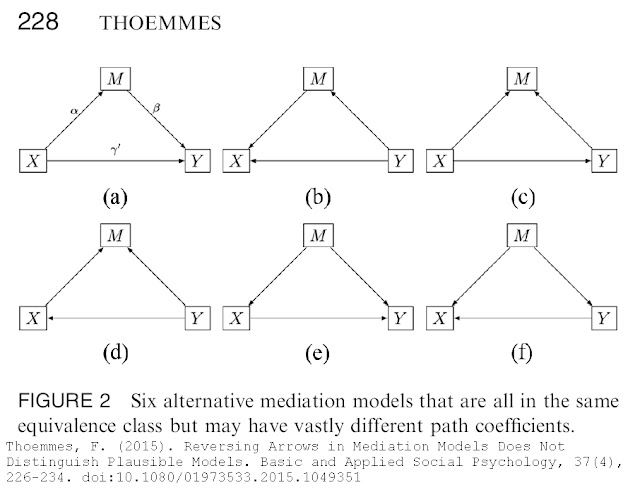Many have delved into its intricacies however, which are many in fact, dealing with specification alternatives. For instance, as Felix Thoemmes e.g. showed, there are 6 alternative statistically indistinguishable models that link all 3 variables (these are then all 'saturated models': no test of fit to data in SEM can be done).
Another take on this is the Conrady & Jouffe (2015) display of all 27 possible causal specifications one may contemplate when analyzing such 'simple' model (They use N1, N2, N3): this makes clear that the researcher/analyst 'gets married' to a specific causal structure s/he believes to operate behind the data, i.e. that generated it; In BayesiaLab this is obvious by asking the user for direct input ('drawing an arrow', much like in AMOS).
Of course, with >3 variables, the number of possibilities quickly get out of hand! Some can be ruled out by theory and prior findings, others by 'hunches', others by 'strong beliefs' (more so the case in practice, I'd say).
Conrady, S., & Jouffe, L. (2015). Bayesian Networks and BayesiaLab: A Practical Introduction for Researchers. http://www.bayesia.com/book
Thoemmes, F. (2015). Reversing Arrows in Mediation Models Does Not Distinguish Plausible Models. Basic and Applied Social Psychology, 37(4), 226-234. doi:10.1080/01973533.2015.1049351 www.tandfonline.com/doi/pdf/10.1080/01973533.2015.1049351


No comments:
Post a Comment